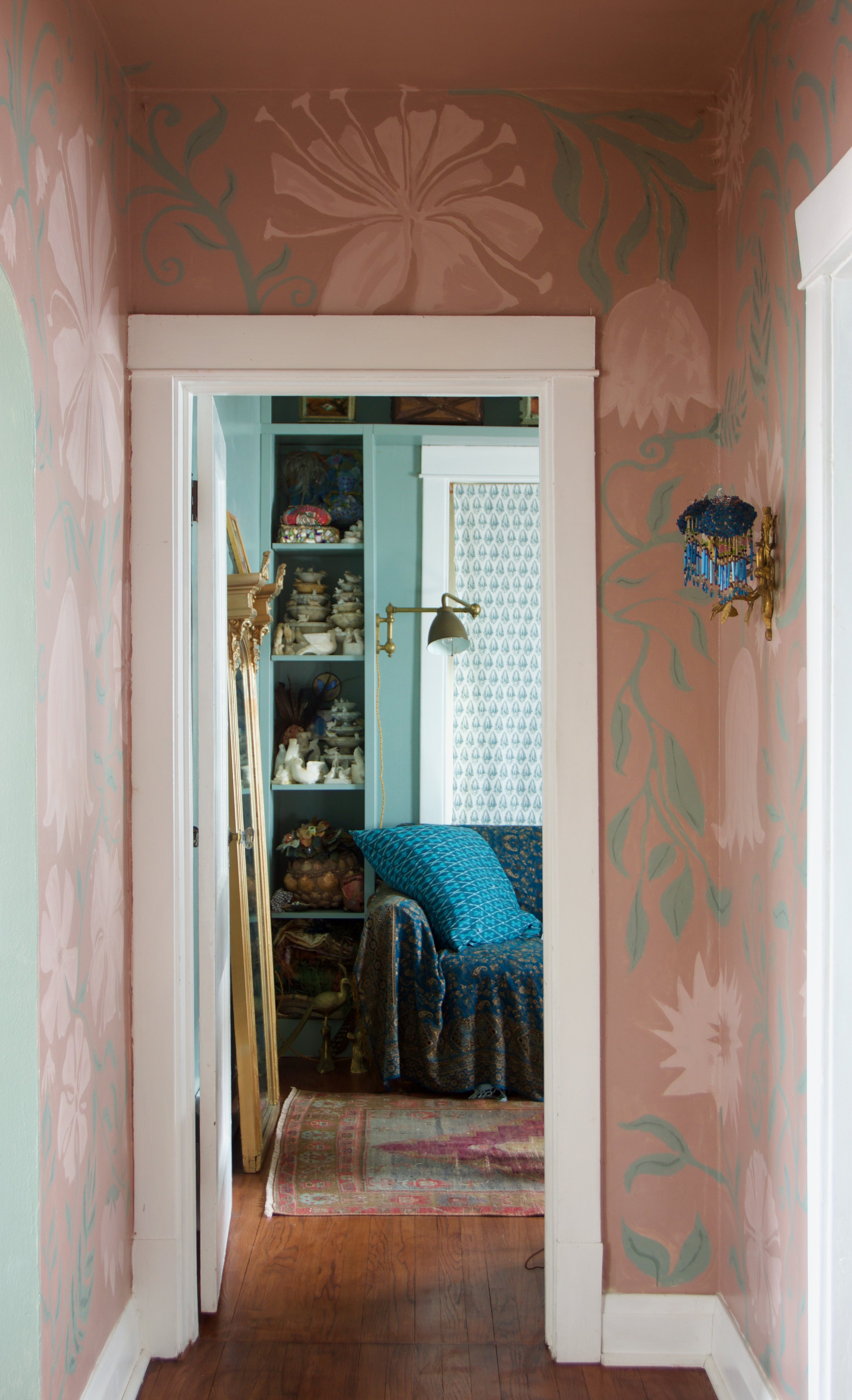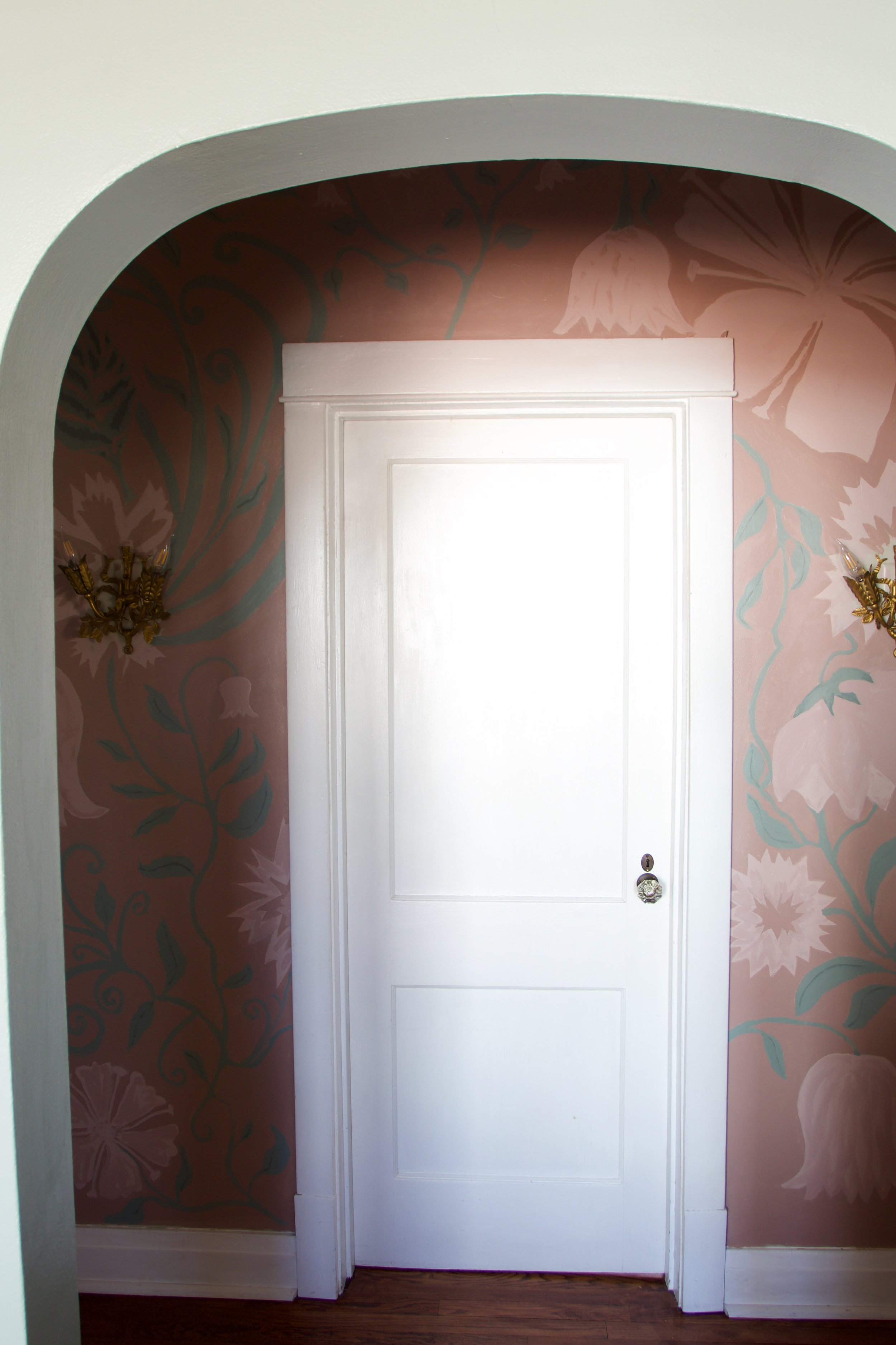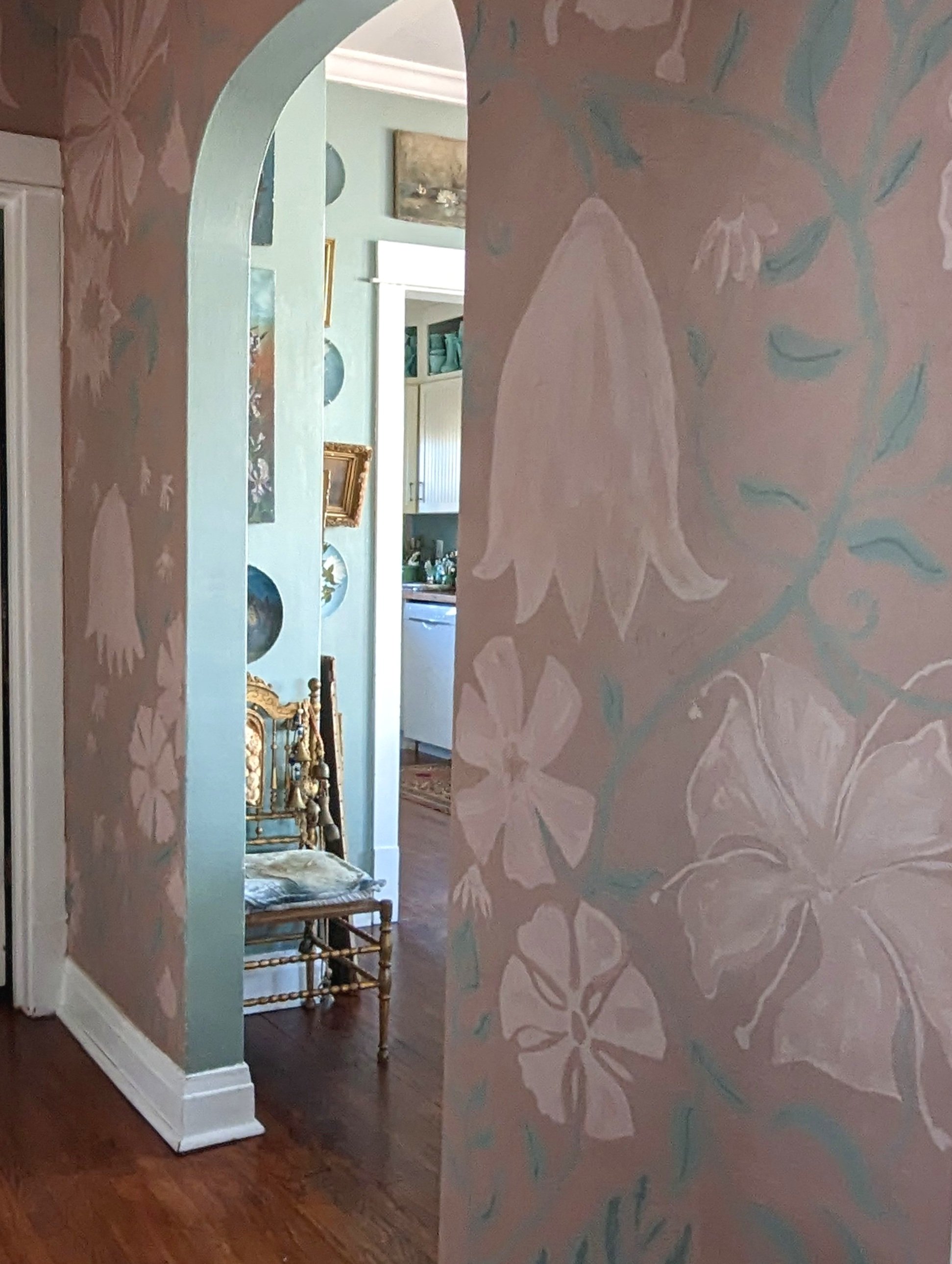I doodled my way through dull college lectures. Actually, I doodled my way through every lecture. Also every sermon and mind-numbing meeting.
My doodles don’t dazzle. They’re spontaneous patterns of squigglies, florals, dots and lines with overlays of bubbly and super-swirly font. It’s nonsensical fun.
I can doodle, but I can’t draw. Even stick figures fight for believable form under my pencil.
About eight years ago—the year I started my IG account, Megillicutti—I invited one of my best friends, an artist, to hand paint one side of my hallway. I had pinned an image of an over-scaled, floral pattern for inspiration.
The original inspiration for my wall courtesy of http://www.atelier-wandlungen.de/
Within a few hours, my friend had sketched in pencil a similar pattern; later that week I filled it in with paint that contrasted with the existing base paint.
All I had to do was paint between the lines.
At one point I tried being clever, though, by adding a flourish to a leaf. That leaf grew into a leggy pre-historic amoeba. And because I had long ago lost the color the hallway was originally painted, I couldn’t paint over it. (Fortunately, the amoeba stretched nearly unperceptably across bottom of the wall.)
You would think I’d be dissuaded to try any type of freeform painting. But a year or two later I continued the pattern on the opposing wall—solo.
My mom, Judy Davis, and I completed the hallway believing that if we messed up, we could always paint over it.
You could tell it was done by a wanna-be artist. It wasn’t as good as the pattern on the other side. But it was good enough.
Good enough to live with for six more years. And good enough for an inspiring IG pic or two.
A New Year. A New Hallway.
For about a year, though, I’ve itched to repaint that hallway. My friend has since moved, so I couldn’t rope her into my dreams. I looked for a muralist on Upwork, but the cost was in the thousands. I even begged my son to help.
I quickly tamped down any “just do it” bravado. And so the wall sat “as is” for months—until my mom came for a visit.
There must be a doodling gene. Because my mom is a doodler, too. I thought two doodlers are better than one. Between the two of us, we might be able to pull off the hallway overhaul.
Perfection Is for Fools
Originally, my idea was to paint the wall like a giant paint-by-number. All the negative space a dark shade of pink; all the foliage another shade of pink.
It didn’t work, for many reasons.
The biggest reason was the original design was too much. We needed to eliminate my overwrought doodles. Simplify it. That meant pretty much starting from scratch.
The mantra for our week (and it was a a full week of painting) was: “You can always paint over it.”
Whenever one of us stepped up on the ladder to try painting a new flower, we’d bolster the other’s courage with, “We can always paint over it.”
Whenever a leaf looked more like a Hatch green chile, we, in unison, would say, “We can paint over it!”
When we decided to add a green accent and then another green accent, we reminded each other, “We can always paint over it.” The green stayed. It made the design pop.
And when we stitched in yellow accent, we immediately painted over it. Because that’s what you do when something doesn’t work: you paint over it, and try again.
“With each flower, squiggle and leaf, we reminded each other that perfection was for fools and that we could always paint over the not-yet-right.”
We doodled and repainted our way through the week to good enough. Maybe even fantastic. We did it.
The Wisdom of You Can Always Paint Over It
For perfectionists like I am, there’s wisdom in embracing a “you can paint over it” mentality. Maybe like me, you fail to fail. You never try. That type of failure is a far worse failure than trying and doing something imperfectly the first time.
Each messy flower we painted over was a lesson to be applied to the next flower. Stroke by stroke our skills improved. Our confidence grew. Our vision came to life.
Today, as I write this blog post, and look through the door at the hallway beyond, I feel proud that my intent found form—that I embraced paint-over-imperfection.
I’ll end with a poem by Henry Wadsworth Longfellow who says it better than I do.
Let our defeats—our paint-overs—be victories in disguise.
Loss and Gain
When I compare
What I have lost with what I have gained,
What I have missed with what attained,
Little room do I find for pride.
I am aware
How many days have been idly spent;
How like an arrow the good intent
Has fallen short or been turned aside.
But who shall dare
To measure loss and gain in this wise?
Defeat may be victory in disguise;
The lowest ebb is the turn of the tide







